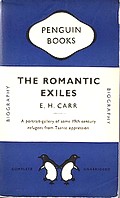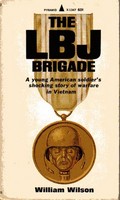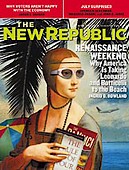In the Spring 2007 issue of the Antioch Review, noveliest and critic Alan Cheuse speculates on “what variety of fiction might have a chance to survive what Norman Mailer in a recent interview dubbed ‘the thirty-years-out rule,’ by which he means that the test of a contemporary writer’s work begins at about thirty years after his death when we can see whether his work is still in print.”
As evidence of the evanescence of contemporary fame, Cheuse cites Mrs. Fanny Trollope’s list of good American writers of the early 1830s in her Domestic Manners of the Americans. Among the best, in her opinion: Timothy Flint. “There is a vigor and freshness in his writing that is exactly in accordance with what one looks for, in the literature of a new country….”
Timothy [who?] Flint doesn’t even rate a Wikipedia entry, although you can find his Columbia Encyclopedia entry on Timothy Flint doesn’t even rate a Wikipedia entry, although you can find his Answers.com. It turns out that Flint was a clergyman whose biography of Daniel Boone, The First White Man of the West (subtitled Life and Exploits of Col. Dan’l. Boone, the First Settler of Kentucky; Interspersed with Incidents in the Early Annals of the Country) can be found online at Project Gutenberg.
Cheuse goes on to offer “a group of test cases” of the durability of contemporary fame:
- • John O’Hara
- “At the height of his powers, O’Hara was writing stories thick and fast for the New Yorker, when that distinguished magazine stood at the pinnacle of contemporary fiction publishing. A snapshot of that moment — which lasted, actually, for nearly twenty years (from 1930 to 1949) — would show a fiction writer with a devoted audience destined to stay around for a long time…. Not even Geoffrey Wolff’s intelligent biography of O’Hara [The Art of burning Bridges: A Life of John O’Hara] has done much to bring him back into the American canon.”
- • Lawrence Durrell
- “Another writer whose day was seen as one that would last into infinity…. Justine, the first volume of his “Alexandria Quartet,” first published in the United States in 1961, turned all our heads toward his future and ours, which we saw as intertwined. Like some creature trapped in a bog, the book slowly sank out of sight. Has anyone recently tried rereading Justine?”
- • Marguerite Young
- “… Young’s two-volume novel [Miss Macintosh, My Darling]… was highly praised at the time of publication in the New York Times Book Review, among others, by novelist William Goyen (his own quickly faded reputation now nearing the death-plus-thirty-year mark), by Anaïs Nin (who only last month reached the death-plusthirty-year mark), by the, fortunately, still vital Kurt Vonnegut and, when the novel appeared in a reprint edition in 1993, by the astute Washington Post book critic Michael Dirda. Even so, she is not read much today.”
- • John Fowles
- “… whose reputation had languished even within his own lifetime (due in some part to the accident of a debilitating stroke) and now in the wake of his recent demise comes into question. Last year I reread The Magus and found that it cheered my soul (in a shivery sort of way). Let’s all reread Daniel Martin, the novel we all took to be a work of genius when it first appeared, and meet next year and compare notes. Is Fowles a writer for the millennium? Or is he just another flash in the pan whose novelty we mistook for brilliance?”
In Cheuse’s view, these examples raise “the larger question of exactly what is, if we can determine anything in human studies with any exactitude, a classic? Classic. A classic writer is a writer of the first rank. A classic work is outstanding work of the first order. Classic works are those works that endure over time, over generations, over centuries.”
He offers a few books he considers “valuable, which few others seem to care enough about to read and reread”:
“But we can never be sure…. Reputations rise and fall, and rise again.”
He concludes with the example of the novelist Mary Lee Settle who died in Charlottesville, Virginia on September 28, 2005. “She did some work that will last,” George Garrett said.
“Yes,” agrees Cheuse. “That’s the best tribute one writer can give to another. But the thirty year clock is ticking — twenty-eight years to go — and despite all our best predictions chances are her work will, alas, end up like her ashes, cast on the Rivanna River, on a rainy early autumn afternoon, disappearing into the flow.”
“Or, again, maybe not. Perhaps her wonderful love story Charley Bland will come back to haunt the lives of deep-hearted Americans in, say, thirty or forty years. And her joyful novel of quandary and religious faith, Celebration, will find a home in the minds of future citizens trying to live with the large and awful questions of destiny and vocation.”
Cheuse also reprints the complete list of titles from David Madden and Peggy Bach’s Rediscoveries II, obviously cut-and-pasted from this site.

 The
The  Moskowitz mentions that the club has William Wilson’s
Moskowitz mentions that the club has William Wilson’s 